
DOC022.97.90255
© HACH Company, 2010, All rights reserved. Printed in Spain
Manual
Manual
Manual de instruções
Manuel utilisateur
操作手册
07/2010, Edition 1
07/2010, Edición 1
07/2010, Edição 1
07/2010, Edition 1
2010
年7月,第一版
sensION+ PH1_HACH_0710.indd 1sensION+ PH1_HACH_0710.indd 1 7/9/10 13:08:547/9/10 13:08:54

sensION+ PH1_HACH_0710.indd 2sensION+ PH1_HACH_0710.indd 2 7/9/10 13:08:557/9/10 13:08:55

ENGLISHESPAÑOLFRANÇAIS PORTUGUÊSCONTACT
中文
中文
sensION+ PH1_HACH_0710.indd 3sensION+ PH1_HACH_0710.indd 3 7/9/10 13:08:557/9/10 13:08:55

sensION+ PH1_HACH_0710.indd 4sensION+ PH1_HACH_0710.indd 4 7/9/10 13:08:557/9/10 13:08:55

1
Table of contents
1. Specifications . . . . . . . . . . . . . . . . . . . . . . . . . . . . . . . 3
2. General information . . . . . . . . . . . . . . . . . . . . . . . . . 4
2.1. Safety information . . . . . . . . . . . . . . . . . . . . . . . . . 4
2.1.1. Use of hazard information . . . . . . . . . . . . . . 4
2.1.2. Precautionary labels . . . . . . . . . . . . . . . . . . 4
2.2. General information . . . . . . . . . . . . . . . . . . . . . . . . 4
3. Installation . . . . . . . . . . . . . . . . . . . . . . . . . . . . . . . . 5
3.1. Contents . . . . . . . . . . . . . . . . . . . . . . . . . . . . . . . . 5
3.1.1. Component list . . . . . . . . . . . . . . . . . . . . . . 5
3.1.2. Accessories . . . . . . . . . . . . . . . . . . . . . . . . 5
3.2. Battery power . . . . . . . . . . . . . . . . . . . . . . . . . . . . 6
3.2.1. Inserting the batteries . . . . . . . . . . . . . . . . . 6
3.3. Disconnecting/connecting the electrode . . . . . . . . . . 7
3.4. Carrying case . . . . . . . . . . . . . . . . . . . . . . . . . . . . . 7
4. Start-up . . . . . . . . . . . . . . . . . . . . . . . . . . . . . . . . 8
4.1. General information . . . . . . . . . . . . . . . . . . . . . . . . 8
4.2. User interface and browsing . . . . . . . . . . . . . . . . . . 8
4.2.1. Keyboard and display . . . . . . . . . . . . . . . . . 8
5. Operation . . . . . . . . . . . . . . . . . . . . . . . . . . . . . . . . 9
5.1. Measurement. . . . . . . . . . . . . . . . . . . . . . . . . . . . . 9
5.1.1. Stability measuring . . . . . . . . . . . . . . . . . . . 9
5.1.2. Continuous measuring . . . . . . . . . . . . . . . . . 9
5.2. Changing measuring units (pH/mV) . . . . . . . . . . . . . 9
5.3. Calibrating the pH electrode . . . . . . . . . . . . . . . . . . 10
5.3.1. Preparation . . . . . . . . . . . . . . . . . . . . . . . . 10
5.3.2. One-point calibration . . . . . . . . . . . . . . . . . 10
5.3.3. Two- and three-point calibration . . . . . . . . . . 11
5.4. Calibrating the redox electrode . . . . . . . . . . . . . . . . 12
5.4.1. Preparation . . . . . . . . . . . . . . . . . . . . . . . . 12
5.4.2. Calibration . . . . . . . . . . . . . . . . . . . . . . . . 12
5.5. Readjusting temperature . . . . . . . . . . . . . . . . . . . . . 13
5.6. Manual calibration . . . . . . . . . . . . . . . . . . . . . . . . . 14
5.6.1. Preparation . . . . . . . . . . . . . . . . . . . . . . . . 14
5.6.2. Calibration . . . . . . . . . . . . . . . . . . . . . . . . 14
5.7. Displaying calibration data . . . . . . . . . . . . . . . . . . . 15
5.8. Restoring factory settings . . . . . . . . . . . . . . . . . . . . . 16
5.9. Disabling auto power off . . . . . . . . . . . . . . . . . . . . 16
5.10. Changing temperature units . . . . . . . . . . . . . . . . . . 16
5.11. Display backlighting . . . . . . . . . . . . . . . . . . . . . . . 17
5.12. Shutting down the instrument . . . . . . . . . . . . . . . . . 17
6. Maintenance . . . . . . . . . . . . . . . . . . . . . . . . . . . . . . . 18
6.1. Cleaning the measuring instrument and accessories . . 18
6.2. Storing the instrument . . . . . . . . . . . . . . . . . . . . . . 18
6.3. Changing batteries. . . . . . . . . . . . . . . . . . . . . . . . . 18
7. Error messages . . . . . . . . . . . . . . . . . . . . . . . . . . . . . 19
8. Accessories and spare parts . . . . . . . . . . . . . . . . . . 20
9. Buffer solutions . . . . . . . . . . . . . . . . . . . . . . . . . . . . . 20
10. Limited warranty . . . . . . . . . . . . . . . . . . . . . . . . . . . 22
Contact information
ENGLISH
sensION+ PH1_HACH_0710.indd ANG:1sensION+ PH1_HACH_0710.indd ANG:1 7/9/10 13:08:557/9/10 13:08:55

sensION+ PH1_HACH_0710.indd ANG:2sensION+ PH1_HACH_0710.indd ANG:2 7/9/10 13:08:557/9/10 13:08:55

3
1. Specifications
Subject to change without notice.
Specifications
Display Liquid crystal, backlit, with pictograms
Keypad Membrane, 5 keys
Measuring ranges pH –2.00 to 19.99
mV ± 1400
Temperature –20.0 to 150.0 °C (–4.0 to 302.0 °F)
Resolution pH 0.01
mV 1 (0.1 mV from –199.9 to 199.9 mV)
Temperature 0.1 °C (0.1°F)
Measuring error (± 1 digit) pH ≤ 0.01
mV ≤ 1
Temperature ≤ 0.2 °C (≤ 0.4 °F)
Reproducibility (± 1 digit) pH ± 0.01
mV ± 1
Temperature ± 0.1 °C (± 0.1 °F)
Temperature compensation With built-in Pt1000 temperature sensor
Calibration standards pH: 2.00, 4.01, 7.00, 9.21, 10.01 (at 25 °C)
Redox: 220 mV (at 25 °C)
Input impedance > 10
12
. The switch from high to low impedance is made in the electrode
connector.
Dimensions of the measuring instrument and ambient conditions
Operating temperature 0 °C to 50 °C (32 °F to 122 °F)
Storage temperature –15 °C to 65 °C (5 °F to 149 °F)
Ambient conditions 80% relative humidity (non-condensing)
Weight 300 g
Size 186 x 73 x 38 mm
Additional technical data
Energy management Automatic power off after 5 minutes of inactivity
Type of protection IP 67
Power supply (batteries) 3 x 1.5V, type AA batteries
Autonomy of over 500 hours
Conector MP-5, five-contact multipin
Warranty
Warranty 3 years
ENGLISH
sensION+ PH1_HACH_0710.indd ANG:3sensION+ PH1_HACH_0710.indd ANG:3 7/9/10 13:08:557/9/10 13:08:55

4
2. General information
As a result of constant improvements to our products sometimes differences may exist between this manual
and the instructions supplied with the instrument.
2.1. Safety information
Please, read carefully this information before installing and using the instrument !
Pay attention to all danger and caution statements.
2.1.1. Use of hazard information
DANGER
Indicates a potentially or imminently hazardous situation that, if not avoided, will result in death
or serious injury.
WARNING
Indicates a potentially or imminently hazardous situation that, if not avoided, may result in death
or serious injury.
CAUTION
Indicates a potentially hazardous situation that, if not avoided, may result in minor or moderate injury.
Important note
Indicates a situation that, if not avoided, could lead to damage to the instrument. Important infor-
mation that requires special emphasis.
Note
Information that supplements points in the main text.
2.1.2. Precautionary labels
Read all labels and tags attached to the instrument. Personal injury or damage to the instrument could occur
if not observed.
This symbol references the instruction manual for operation or safety information.
Electrical equipment marked with this symbol may not be disposed of in European public disposal systems
after 12 August of 2005. In conformity with European local and national regulations (EU Directive
2002/96/EC), European electrical equipment users must now return old or end-of life equipment to the
Producer for disposal at no charge to the user.
Note: For return for recycling, please contact the equipment producer or supplier for instructions on how
to return end-of-life equipment, producer-supplied electrical accessories, and all auxiliary items for proper
disposal.
2.2. General information
The
sensION ™+ PH 1
is a portable pH meter. To read the pH value, you will need to connect a pH
electrode (Fig. 3, pg. 7).
sensION+ PH1_HACH_0710.indd ANG:4sensION+ PH1_HACH_0710.indd ANG:4 7/9/10 13:08:557/9/10 13:08:55

5
3. Installation
3.1.1. Component List
Item Number Instrument Electrode Accessories Batteries Manual
LPV2500.97.0002
sensION ™+ PH 1
–– ––
✓✓
LPV2550T.97.002
sensION ™+ PH 1
LZW5050T.97.002
✓
(1)
✓✓
LPV2551T.97.002
sensION ™+ PH 1
LZW5051T.97.002
✓
(1)
✓✓
LPV2552T.97.002
sensION ™+ PH 1
LZW5052T.97.002
✓
(1)
✓✓
LPV2555.97.0002
sensION ™+ PH 1
LZW5055.97.0002
✓
(2)
✓✓
ENGLISH
WARNING
Risk of falling. Measurements are made directly in situ with this instrument. To prevent the risk of
falling, ensure compliance with all local safety regulations on securing with ropes and on the use of
adequate protective clothing and footwear.
Risk of injury. Do not attach the measuring instrument to your body. The measuring electrode could
be accidentally caught in a motor or stirrer and could endanger the user through the connected
electrode cable.
3.1. Content of the
sensION ™+ PH 1
After removing the instrument, check each part for possible damage. All components on the attached list
must be present. If there are any missing or damaged parts, contact the manufacturer or distributor.
3.1.2. Accessories
• Carrying case.
• (1) Buffer solutions, 125 mL, pH 4.01, pH 7.00
and pH 9.21 (25 °C).
Calibration tubes, pH 4.01, pH 7.00
and pH 9.21.
• (2) Redox standard solution, 125 mL, 220 mV
(25°C).
Tube for redox standard calibration 220 mV.
• KCl 3M, 50 mL.
• Two 90-mL bottles for sample and sensor
cleaning.
• Working electrode protectors (models 2551 T
and 2552 T only).
Fig. 1. Equipment composition
PH1
sensION
™
sensION+ PH1_HACH_0710.indd ANG:5sensION+ PH1_HACH_0710.indd ANG:5 7/9/10 13:08:557/9/10 13:08:55

6
3. Installation
3.2. Battery power
WARNING
Risk of fire or explosion. Use only AA alkaline batteries for the measuring instrument and ensure that
the batteries are correctly inserted in their compartment. Inserting batteries incorrectly can damage
the instrument and cause fires or explosions.
The measuring instrument works with three batteries (1.5 V, AA).
The batteries supplied have a useful life of approximately 500 hours.
Important note: Never use different types of batteries together.
Important note: If the measuring instrument is not going to be used for a long period of time, remove
the batteries to prevent leakage in the instrument.
3.2.1. Inserting the batteries
1. Open the lid of the battery compartment by pressing and pulling on the tab.
2. Insert the batteries supplied (1.5 V AA). Note the polarity markings inside the battery compartment.
3. Close the lid of the battery compartment.
Fig. 2. Inserting the batteries
1
Tab
2
Battery compartment lid
3
Batteries
4
Battery compartment
+
+
+
2
1
3
4
sensION+ PH1_HACH_0710.indd ANG:6sensION+ PH1_HACH_0710.indd ANG:6 7/9/10 13:08:577/9/10 13:08:57

7
3. Installation
ENGLISH
3.3. Disconnecting/connecting the electrode
The
sensION ™+ PH 1
kits are supplied with the sensor attached to the instrument.
Fig. 3. Disconnecting/connecting the sensor to the measuring instrument
Sensor disconnection
Sensor connection
Important: do not unscrew the connector.
3.4. Carrying case
The carrying case can be used as a support for both, instrument and sensor, see figure.
Electrode position
when it is not in use.
sensION+ PH1_HACH_0710.indd ANG:7sensION+ PH1_HACH_0710.indd ANG:7 7/9/10 13:08:577/9/10 13:08:57

8
4. Start-up
4.1. General information
Important note: Before start-up, make sure that the electrode is connected to the measuring instrument.
Fig. 4. Keypad description
Display
1 Measured pH/mV values.
2 Temperature.
3 Measuring time (hh:mm:ss).
4 Units of measurement.
5 Battery indicator.
Keypad
- Instrument on/off.
- Display light on.
- Start of measuring.
- Start of calibration.
- Selection of parameter to
calibrate.
- Selection of temperature units.
1
2
3
PH1
sensION
™
5
4
4.2. User interface and navigation
4.2.1 Keyboard and display
Figure 4 indicates the instrument keys and display.
1. Connect the electrode (if necessary) to the
measuring instrument (Fig. 3, pg. 7).
2. Turn on the instrument.
3. Perform calibration (see pg. 10-12).
4. Perform the measurement (see pg. 9).
Note: With the instrument switched off,
- Press the
key and the instrument will begin measuring.
- Press the
key and the instrument will begin calibration.
Software version. Instrument serial
number.
Standby screen.
sensION+ PH1_HACH_0710.indd ANG:8sensION+ PH1_HACH_0710.indd ANG:8 7/9/10 13:08:587/9/10 13:08:58

9
5. Operation
ENGLISH
5.1. Measurement
Note: the instrument must be calibrated before reading
the first pH value.
1. Press
to turn on the instrument.
2. Remove the electrode protector.
3. Clean the electrode with deionized water.
4. Stir the electrode uniformly in the sample, holding it
by the top.
5.1.1. Stability measuring
Follow the diagram.
The reading is not locked on the screen until the elec-
trode signal varies less than 0.01 pH (0.5 mV) for 6
sec.
Once the reading has stabilized, the screen will light
up for 2 sec.
5.1.2. Continuous measuring
Once stability measuring has begun, press the
key
twice
.
The instrument displays the measured value directly on
screen at all times.
The continuous reading should always be started after
beginning a stability reading (see diagram).
To end a continuous reading, press
.
The display will light up for 2 sec.
Note: If the measuring instrument is not used for 5 min-
utes, it will shut off automatically.
2 s
+
Stability
measuring
Continuous
measuring
5.2. Changing measuring units
(pH/mV)
To change the units of measurement from pH to mV
or vice versa.
2 s
in Stability measuring, hold down the
key for 2 s
sensION+ PH1_HACH_0710.indd ANG:9sensION+ PH1_HACH_0710.indd ANG:9 7/9/10 13:08:597/9/10 13:08:59

10
5. Operation
5.3.2. One-point calibration
Stir gently holding the sensor by the handle. Do not hold it by the tube to avoid
heating of the buffer solution.
Follow the diagram on the next page.
One-point calibration is acceptable when pH values around that of the buffer
used are being measured.
One-point calibration only corrects the asymmetry potential of the electrode.
Notes: If the measuring instrument is not used for 5 minutes, it shuts off
automatically.
If errors occur during calibration, an error message will appear on the
display screen (see pg. 19).
Fig. 6. Preparation
5.3. Calibrating the pH electrode
Important note: Before turning on the instrument, check that the pH electrode is connected
The instrument must be calibrated before taking the first pH reading.
The calibration can be performed with 1, 2 or 3 points.
5.3.1. Preparation
1. Fill the tubes with the buffer solutions (note the fill level).
2. Unscrew the protector containing the electrolyte and rinse the electrode with deionized water.
3. Screw the electrode on to the tube containing the first buffer.
5
ml
P/
N.
LZW9460.
99
5
ml
P/
N.
L
ZW9461.
98
5
ml
P/
N.
LZW9462.99
ml
ml
ml
ml
P/
N.
L
ZW94
94
ml
ml
P/
N.
L
ZW94
94
ml
ml
ml
ml
P/
N.
LZW94
94
1 2 3
sensION+ PH1_HACH_0710.indd ANG:10sensION+ PH1_HACH_0710.indd ANG:10 7/9/10 13:08:597/9/10 13:08:59

11
5. Operation
ENGLISH
5.3.3. Two- and three-point calibration
Follow the diagram below.
The equipment will repeat the process described for the first
buffer solution with the second and third.
Stir gently holding the sensor by the handle. Do not hold it by
the tube to avoid heating of the buffer solution.
Notes: if the measuring instrument is not used for 5 minutes, it
shuts off automatically.
If errors occur during calibration, an error message will appear
on screen (see pg. 19).
When you switch buffers, rinse the electrode with deionized water.
The buffer solutions in the calibration tubes can be used for
approximately four or five calibrations. It is recommended to
use fresh buffers.
Screw the
electrode
to the 1st tube.
Screw the
electrode
to the 2nd tube.
To exit
calibration
(One point
calibration)
sensION+ PH1_HACH_0710.indd ANG:11sensION+ PH1_HACH_0710.indd ANG:11 7/9/10 13:09:017/9/10 13:09:01

12
5. Operation
5.4. Calibrating the redox electrode
Important note: Before turning on the instrument, check that the Redox
electrode is connected.
Redox electrodes do not have a significant drift of the potential, which
is why they are typically not calibrated. However, some deviations of
potential may occur after continued use of the electrode as a result of
changes to the metal surface or contamination of the reference elec-
trode.
5.4.1. Preparation
1. Fill the tube with the 200 mV standard solution (note the fill level).
2. Unscrew the electrode protector containing the electrolyte and rinse
the electrode with deionized water.
3. Screw the electrode on to the tube containing the standard.
5.4.2. Calibration
Stir gently holding the sensor by the handle. Do not hold it by the tube to
avoid heating of the standard solution.
Follow the diagram.
Notes: If the measuring instrument is not used for 5 minutes, it shuts off
automatically.
If errors occur during calibration, an error message will appear on the
display screen (see pg. 19).
During redox calibration, the temperature of the standard must be manu-
ally entered (by pressing
during the process).
ml P/N.
LZW9462
ml
ml
ml
ml
P/N.
LZW94
94
2 3
Screw the
electrode
to the
standard
tube.
1
sensION+ PH1_HACH_0710.indd ANG:12sensION+ PH1_HACH_0710.indd ANG:12 7/9/10 13:09:037/9/10 13:09:03

13
5. Operation
ENGLISH
5.5. Readjusting temperature
The instrument can correct the deviation of a temperature
probe (built into pH electrodes) at 25 °C and 85 °C (77 °F
and 185 °F).
This allows the instrument to be used as a precision thermometer.
Follow the diagram.
2 s
Enter the correction of
the temperature sensor at
25 °C (77 °F).
Enter the correction of
the temperature sensor at
85 °C (185 °F).
sensION+ PH1_HACH_0710.indd ANG:13sensION+ PH1_HACH_0710.indd ANG:13 7/9/10 13:09:057/9/10 13:09:05

14
5. Operation
5.6. Manual calibration
Important note: Before turning on the instrument, check that
the pH electrode is connected.
Manual readjustment of pH (or mV) measured at any value
within the range.
When readjusting pH, the instrument behaves as though it were
calibrated with a single buffer solution.
5.6.1. Preparation
1. Unscrew the electrode protector containing the electrolyte.
2. Rinse the electrode with deionized water.
3. Dip the electrode into the solution in which manual cali-
bration is to be performed.
Note: Before beginning manual calibration, you must take a
measurement in the standard to be used in the calibration
5.6.2. Calibration
Stir gently holding the sensor by the handle.
Follow the diagram.
(1) Hold down
and then press
.
Notes: If the measuring instrument is not used for 5 minutes, it
turns itself off automatically.
If errors occur during calibration, an error message will ap-
pear on the display screen (see pg. 19).
Before beginning manual calibration, you must take a mea-
surement in the standard to be used in the calibration.
Important: To exit calibration without saving the adjustment,
press
.
pH REDOX
(1)
(1)
sensION+ PH1_HACH_0710.indd ANG:14sensION+ PH1_HACH_0710.indd ANG:14 7/9/10 13:09:057/9/10 13:09:05

15
5. Operation
ENGLISH
5.7. Displaying calibration data
To view the data obtained after calibration on screen.
pH REDOX
Slope
Asymmetry potential
Sensitivity (%) Deviation obtained
Calibration temperature Calibration temperature
Number of buffer
solutions used
Standard used
(1)
(1)
(1) Press the
keys simultaneously.
Note: If the pH was
calibrated at three
points, the data for the
two slopes obtained will
be displayed.
sensION+ PH1_HACH_0710.indd ANG:15sensION+ PH1_HACH_0710.indd ANG:15 7/9/10 13:09:057/9/10 13:09:05

16
5. Operation
5.8. Restoring factory settings
2 s
2 s
pH REDOX
5.10. Changing temperature units
The instrument is shipped ready to measure temperature and express the values in °C.
Follow the diagram to change the units to °F.
5.9. Disabling auto power off
If the measuring instrument is not used for 5 minutes, it shuts off auto-
matically. This automatic power off feature can be disabled.
2 s
etc.
Automatic power
off is disabled
Stable measurement
The current calibration can be erased and
restored to the factory settings.
(1)
(1) Press the
keys simultaneously.
sensION+ PH1_HACH_0710.indd ANG:16sensION+ PH1_HACH_0710.indd ANG:16 7/9/10 13:09:057/9/10 13:09:05
La page est en cours de chargement...
La page est en cours de chargement...
La page est en cours de chargement...
La page est en cours de chargement...
La page est en cours de chargement...
La page est en cours de chargement...
La page est en cours de chargement...
La page est en cours de chargement...
La page est en cours de chargement...
La page est en cours de chargement...
La page est en cours de chargement...
La page est en cours de chargement...
La page est en cours de chargement...
La page est en cours de chargement...
La page est en cours de chargement...
La page est en cours de chargement...
La page est en cours de chargement...
La page est en cours de chargement...
La page est en cours de chargement...
La page est en cours de chargement...
La page est en cours de chargement...
La page est en cours de chargement...
La page est en cours de chargement...
La page est en cours de chargement...
La page est en cours de chargement...
La page est en cours de chargement...
La page est en cours de chargement...
La page est en cours de chargement...
La page est en cours de chargement...
La page est en cours de chargement...
La page est en cours de chargement...
La page est en cours de chargement...
La page est en cours de chargement...
La page est en cours de chargement...
La page est en cours de chargement...
La page est en cours de chargement...
La page est en cours de chargement...
La page est en cours de chargement...
La page est en cours de chargement...
La page est en cours de chargement...
La page est en cours de chargement...
La page est en cours de chargement...
La page est en cours de chargement...
La page est en cours de chargement...
La page est en cours de chargement...
La page est en cours de chargement...
La page est en cours de chargement...
La page est en cours de chargement...
La page est en cours de chargement...
La page est en cours de chargement...
La page est en cours de chargement...
La page est en cours de chargement...
La page est en cours de chargement...
La page est en cours de chargement...
La page est en cours de chargement...
La page est en cours de chargement...
La page est en cours de chargement...
La page est en cours de chargement...
La page est en cours de chargement...
La page est en cours de chargement...
La page est en cours de chargement...
La page est en cours de chargement...
La page est en cours de chargement...
La page est en cours de chargement...
La page est en cours de chargement...
La page est en cours de chargement...
La page est en cours de chargement...
La page est en cours de chargement...
La page est en cours de chargement...
La page est en cours de chargement...
La page est en cours de chargement...
La page est en cours de chargement...
La page est en cours de chargement...
La page est en cours de chargement...
La page est en cours de chargement...
La page est en cours de chargement...
La page est en cours de chargement...
La page est en cours de chargement...
La page est en cours de chargement...
La page est en cours de chargement...
La page est en cours de chargement...
La page est en cours de chargement...
La page est en cours de chargement...
La page est en cours de chargement...
La page est en cours de chargement...
La page est en cours de chargement...
La page est en cours de chargement...
La page est en cours de chargement...
La page est en cours de chargement...
La page est en cours de chargement...
La page est en cours de chargement...
La page est en cours de chargement...
La page est en cours de chargement...
La page est en cours de chargement...
La page est en cours de chargement...
La page est en cours de chargement...
La page est en cours de chargement...
La page est en cours de chargement...
-
 1
1
-
 2
2
-
 3
3
-
 4
4
-
 5
5
-
 6
6
-
 7
7
-
 8
8
-
 9
9
-
 10
10
-
 11
11
-
 12
12
-
 13
13
-
 14
14
-
 15
15
-
 16
16
-
 17
17
-
 18
18
-
 19
19
-
 20
20
-
 21
21
-
 22
22
-
 23
23
-
 24
24
-
 25
25
-
 26
26
-
 27
27
-
 28
28
-
 29
29
-
 30
30
-
 31
31
-
 32
32
-
 33
33
-
 34
34
-
 35
35
-
 36
36
-
 37
37
-
 38
38
-
 39
39
-
 40
40
-
 41
41
-
 42
42
-
 43
43
-
 44
44
-
 45
45
-
 46
46
-
 47
47
-
 48
48
-
 49
49
-
 50
50
-
 51
51
-
 52
52
-
 53
53
-
 54
54
-
 55
55
-
 56
56
-
 57
57
-
 58
58
-
 59
59
-
 60
60
-
 61
61
-
 62
62
-
 63
63
-
 64
64
-
 65
65
-
 66
66
-
 67
67
-
 68
68
-
 69
69
-
 70
70
-
 71
71
-
 72
72
-
 73
73
-
 74
74
-
 75
75
-
 76
76
-
 77
77
-
 78
78
-
 79
79
-
 80
80
-
 81
81
-
 82
82
-
 83
83
-
 84
84
-
 85
85
-
 86
86
-
 87
87
-
 88
88
-
 89
89
-
 90
90
-
 91
91
-
 92
92
-
 93
93
-
 94
94
-
 95
95
-
 96
96
-
 97
97
-
 98
98
-
 99
99
-
 100
100
-
 101
101
-
 102
102
-
 103
103
-
 104
104
-
 105
105
-
 106
106
-
 107
107
-
 108
108
-
 109
109
-
 110
110
-
 111
111
-
 112
112
-
 113
113
-
 114
114
-
 115
115
-
 116
116
-
 117
117
-
 118
118
Hach sensION+ pH1 Manuel utilisateur
- Taper
- Manuel utilisateur
- Ce manuel convient également à
dans d''autres langues
- English: Hach sensION+ pH1 User manual
- español: Hach sensION+ pH1 Manual de usuario
- português: Hach sensION+ pH1 Manual do usuário
Documents connexes
-
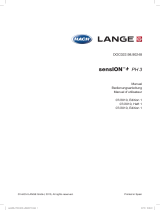 Hach sensION+ pH3 Manuel utilisateur
Hach sensION+ pH3 Manuel utilisateur
-
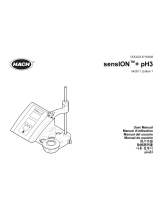 Hach sensION+ pH3 Manuel utilisateur
Hach sensION+ pH3 Manuel utilisateur
-
Hach sensION+ MM150 Manuel utilisateur
-
Hach sensION+ DL Series Manuel utilisateur
-
Hach sensION+ EC 5 Manuel utilisateur
-
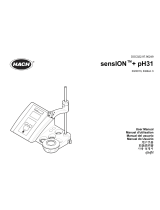 Hach sensIONTM+ pH31 Manuel utilisateur
Hach sensIONTM+ pH31 Manuel utilisateur
-
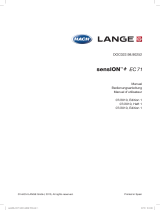 Hach LPV3110.98.0002 Manuel utilisateur
Hach LPV3110.98.0002 Manuel utilisateur
-
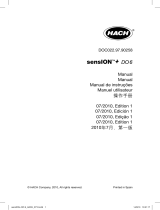 Hach sensION+ DO6 Manuel utilisateur
Hach sensION+ DO6 Manuel utilisateur
-
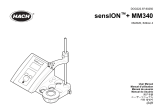 Hach sensION MM340 Manuel utilisateur
Hach sensION MM340 Manuel utilisateur
-
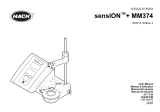 Hach sensION+ MM374 Manuel utilisateur
Hach sensION+ MM374 Manuel utilisateur




























































































































